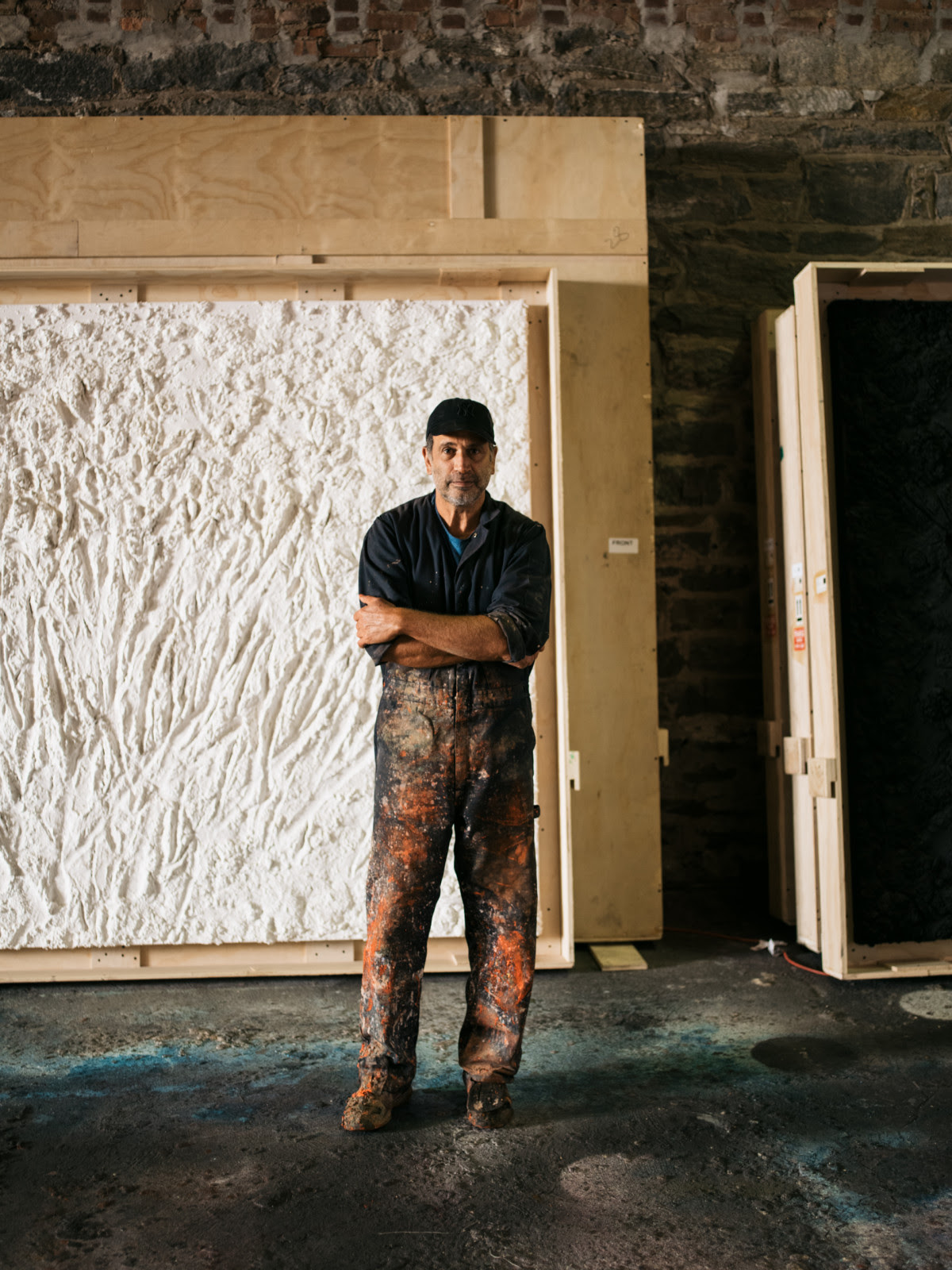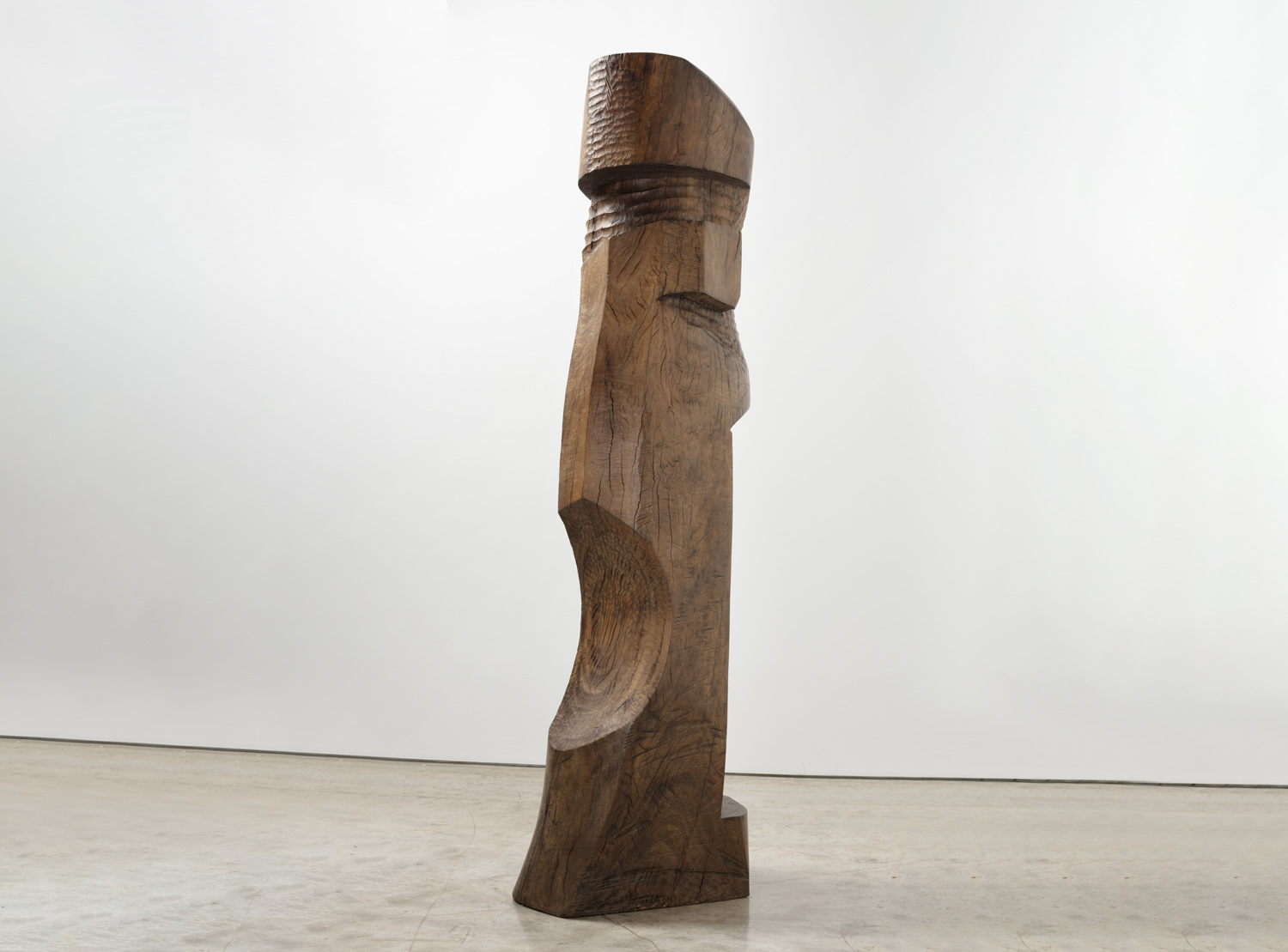Lee Krasner's collage paintings demonstrate the artist’s tireless and severe self-examination and the significant instances in which she would destroy previous works and reconstitute their elements into new compositions. This cannibalistic practice resulted in many of Krasner’s most innovative bodies of work, in which elements of painting, drawing, and collage all co-exist in dramatic form and transcend categorization. Krasner’s use of her own and of Jackson Pollock’s old paintings in new work is evocative of a distinct psychological and creative tension that is masterfully explored by Siri Hustvedt in her texts Mysteries of the Rectangle, The Blazing World, and Living, Thinking, Looking. The following text is the author and essayist's response to the exhibition.
“If you think of it in terms of time, in relation to past, present and future, and think of them all as a oneness, you will find that you swing the pendulum constantly to be with now. Part of it becomes past and the other is projection but it has got to become one to be right now.” –Lee Krasner
Time is difficult to register in a visual work of art, which does not take narrative form as film and comics do in a succession of framed images. Phenomenological time is invisible, although we can represent it on a clock as shared social time. There is emotional time, too. Boredom slows down time and immersive work speeds it up. But timing or rhythm is lived in the body—in heartbeat and breathing, in the menstrual cycle, in walking, running, dancing, sexual coupling, and in earthly rhythms that affect the body’s motions in the repetitions of day and night and the shift of seasons, patterns that are not necessarily conscious but belong to what Merleau-Ponty called the “anonymous” body that is not reflectively self-conscious, not thinking of itself as an object to itself.
“I never violate an inner rhythm.” This quotation from Krasner hovers over images, appears as a tag line above articles, or a sentence under her photograph, its significance unexplained. We know that Piet Mondrian said to her when he looked at her work in 1941, “you have a very strong inner rhythm. Never lose it.” I suspect Mondrian’s compliment remained with Krasner as a brain tattoo but also resonated with her felt experience—that painting is a rhythmical art, despite the obvious fact that paintings don’t move. We know that the older and the younger artist both loved jazz, that they went dancing together, and that she said he was hard to follow, that his timing on the dance floor was difficult. I have the same thought about Krasner now—her timing is difficult. When I sat on the floor of the Kasmin Gallery, I made notes to myself, among them: “motor-sensory effects,” “acting in time out of time,” and “hybrid temporality.” These admittedly cryptic messages to myself were not thoughts so much as eruptions that I am trying to make sense of as I write.
“Her wisdom razes hierarchy—this exploratory slippage moves up and down, back and forth, not for better or for worse. Like a pendulum keeping time, it swings in limited space and has a repetitive beat.”
What was Krasner saying about time in the above epigraph? It comes from “Letter to a Young Woman Artist,” which she wrote in 1974 for The Feminist Art Program at California Institute of the Arts. She begins by referring to “questioning of her newer work” as “more organic” and “close to nature,” then explains with a spatial metaphor, “I think for every level you go higher, you slip down one or two levels, and then come back up again…I don’t mean that detrimentally. I think it is like the swing of the pendulum, rather than better or back, assuming that back means going down.” After this, she moves to the temporal metaphor quoted in the epigraph. Krasner was not writing about her “method” or conscious “process.” I think she was describing what she had discovered over many decades of work and offers to the anonymous young artist. Her wisdom razes hierarchy—this exploratory slippage moves up and down, back and forth, not for better or for worse. Like a pendulum keeping time, it swings in limited space and has a repetitive beat.

Her description of past, present, and future echoes Edmund Husserl’s use of “retention” and “pretension,” or memory of the immediate past and anticipation of the immediate future as part of time perception. But Krasner’s “oneness” of time is achieved on the canvas—the literal workspace, which, once finished, is always “now.” Nothing is added or subtracted because the virtual space is given to the viewer all at once—unless you cut it up to create another “now” as Krasner did in her collage art, tearing, slicing, and refitting material from her own and her husband’s old work to create radical reinventions of the past, both organic and mechanical, in dull colors and brilliant ones. This is not “a bizarre form of self-cannibalization,” as the critic Hilton Kramer called it; nor is it, if one follows his logic, a consumption of the spouse’s body. Indeed, such commentary is possible if and only if art is construed as the product of a static, authentic, bloated subjectivity—“the real me” of American myth. Krasner’s collages constitute its opposite. Fluid, adaptive, and intersubjective, the work incorporates the other, both the earlier self and the beloved partner.

Two years after she composed the letter to the imaginary student, Krasner made Imperfect Indicative, which I had seen before only in reproduction. Its effect on me was visceral and immediate: a catch of breath, muscle tension, elevated mood. The sharp cuts into drawings Krasner made in the 1940s while studying with Hans Hoffman and their arrangement create an uncanny balance between violence and calm on the canvas. The spaces left naked are as arresting as the slashed figures. It is as if I had encountered memory as an external object. Memory is not a fixed engram; it is always reorganized, altered, reconsolidated by the contextual emotional realities of the present, retrievable in shards, never wholes. We only remember in the present. The imperfect, incomplete or unfinished, for a past that was ongoing. The mood: indicative. I used to draw in that style.
The philosopher Susanne Langer argued that art forms are symbolic of “the logic of sentience,” the homeostatic patterns of organic life, an articulation of its dynamic rhythms. In Mind: An Essay on Human Feeling, she writes, “this abstract likeness to feeling teaches me, without effort or explicit awareness what feeling is like.”For Langer this feeling is mind. The neuroscientist Antonio Damasio makes the same argument: feeling is the foundation of the mental. In Krasner’s collage paintings we experience the objectification of dynamic memory traces and their necessarily hybrid reality as recontextualized in the present. I also jotted down these words while I was in the gallery: “the past is not the past, misogyny, reinterpretation / the new past.”
“If I hadn’t have been a woman,” Krasner said, “I’d have had a different situation.” The politics of mea culpa do not fix the damage. The past may create what Griselda Pollack trenchantly called “the missing future:” “nothing can undo the effects of such failures to create the shows in time that would have educated the public, generated scholarly studies and constituted the material records for future histories of an inclusive twentieth century.” Sixteen years after Krasner’s death, an art reviewer for The New York Times (that reliable barometer of received opinion) pushed against reinterpreting Krasner’s work: “Krasner was not a postmodernist; she wanted all too obviously to be a great modernist painter. But she had her moments of exhilarating freedom from that oppressive ambition.” Unctuous condescension to ambition in female form, absurd reification of abstract categories, and blithe dismissal of work that resists simplistic reduction are typical devices of compensatory masculinity in all the arts. But change is life and what was once marginal can be repositioned in a new context and seen again. It’s about time.

Siri Hustvedt is the author of a book of poetry, three collections of essays, a work of non-fiction, and six novels, including the international bestsellers What I Loved and The Summer Without Men. Her most recent novel The Blazing World was long-listed for the Man Booker Prize and won The Los Angeles Book Prize for fiction. In 2012 she was awarded the International Gabarron Prize for Thought and Humanities. She has a PhD in English from Columbia University and is a lecturer in psychiatry at Weil Cornell Medical College in New York. Her work has been translated into over thirty languages.































